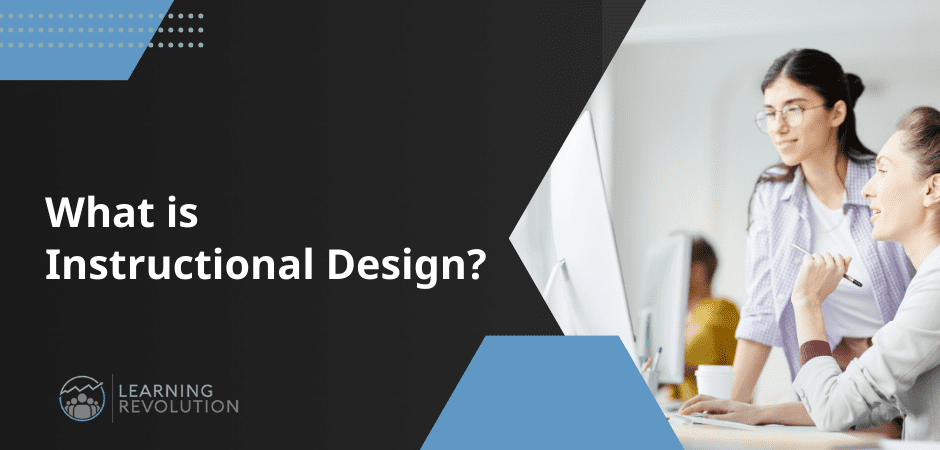

Instructional design (ID) is the foundation of every class and course. From elementary school to online offerings from industry experts and entrepreneurs, good instructional design means better outcomes for learners.
As a course creator, good instructional design can set your courses apart from the competition. A strong plan will help you move eager learners along, educating them and delivering the value your course promises. That can lead to more satisfied customers, more opportunities for positive reviews, and many other benefits.
Let’s take a deeper dive into the question, what is instructional design? We’ll cover the basics, why it’s important, and how to apply some of its principles to your course.
Understanding Instructional Design: The Foundations
Instructional design is the systematic process of creating instructional materials and activities to help people learn. It’s a field that emerged in the 1940s but has grown in popularity over time. It’s been advanced through technology and our understanding of how humans learn. At its core, this approach focuses on providing learners with engaging content that can be easily accessed, understood, and applied.
The foundations of instructional design are rooted in research-based strategies for designing effective learning experiences. These strategies include:
- Analyzing learner needs
- Selecting appropriate media for delivery
- Structuring materials logically so they make sense to learners
- Providing meaningful feedback throughout the learning experience
- Assessing whether or not learners have achieved their goals
It’s best to utilize these foundational principles with current trends in educational technology and adult learning theory. This can help IDs create powerful learning experiences for any audience regardless of age or environment.
Why is Instructional Design Important?
Instructional design is an essential part of education. It allows learners to better comprehend topics and concepts through tailored instruction that maximizes their understanding. It’s helpful to think about individual needs and strengths as instructional designers.
This creates a learning environment where students can achieve the most impactful results. In today’s education system, this process has become even more crucial as we move towards online learning environments.


With 73% of US students expressing their desire to continue taking online classes after the pandemic, it’s important to understand why instructional design in education matters. This process also helps edupreneurs create an effective environment allowing learners to get more out of their educational experience, especially when studying remotely or online.
A well-crafted instructional approach can also improve student engagement and performance. Being prepared can ensure efficiency and help learners absorb relevant knowledge with less effort on their part.
Instructional design is essential for both students and professionals looking to enhance their career prospects. This can help them stay ahead of the competition, gain valuable knowledge, and advance in a meaningful way.
What an Instructional Designer Does
An instructional designer is someone who designs and develops learning solutions to help people acquire knowledge, skills, and attitudes. They are responsible for creating engaging and effective learning experiences that can be used in a variety of settings such as online courses, workshops, seminars, or other training programs.
An ID must have an understanding of the principles of adult learning theory as well as the ability to use technology to create interactive and effective materials. They also need strong communication skills in order to effectively collaborate with subject matter experts (SMEs) and stakeholders on projects.
Along those lines, becoming an instructional designer can be achieved by taking either a direct or an indirect path. A master’s degree is not required, although it will give you a competitive edge in the field; however, building up your portfolio of learning objectives and other projects should be your primary focus if you want to secure a job as an instructional designer.
Ultimately, IDs are professionals with a unique blend of educational backgrounds and technical skills who create learning experiences that meet specific objectives. They have the problem-solving abilities to design innovative solutions, making them ideal candidates for those interested in pursuing this field. With appropriate qualifications, anyone can learn how to become an instructional designer and begin crafting unforgettable learning designs!
Why Instructional Design Matters for Course Creators
Instructional design is a must-have skill for online course creators, as it plays an essential role in providing engaging learning experiences. ID ensures learners are engaged throughout the entire course and helps them reach their goals more effectively.
Without proper instructional design, courses will lack engagement, resulting in text-heavy materials that won’t retain student attention or facilitate a meaningful understanding of the concepts being taught.
Overall, ID provides a streamlined way to bring together all the components of successful e-learning. By utilizing this approach, you can ensure maximum benefit from your online courses compared to traditional face-to-face classes.
The Benefits of Strong and Consistent Instructional Design
Instructional design is a vital tool for learners, as it tailors educational materials to their unique needs. By combining education and psychology with communication strategies, instructional designers create powerful training designs that ensure individuals can truly comprehend the concepts being taught.
ID is also much more than just creating training materials. It takes into account how people learn, the tools that can be used to effectively facilitate behavior change, and how these elements should come together for an effective learning experience.
In this way, a consistent instructional design model provides a powerful platform for learners to reach their full potential.
The Contrast Between Curriculum and Instructional Design
Curriculum design and instructional design are closely related yet distinct fields, with varying roles depending on the industry or employer. Their differences include elements such as:
- Scope of focus – While curriculum design looks at what students learn, ID focuses on how they acquire knowledge – examining materials, methods, and objectives along the way. With a wider perspective of standards, goals, and criteria, curriculum development takes into account all aspects that shape educational programs, while instructional design provides more targeted guidance for learning activities.
- Different skill sets – An instructional designer needs problem-solving abilities whereas a curriculum developer should have technological proficiency. Both fields demand their own expertise in order for professionals to excel at the job.
- Implementation – Curriculum design focuses on the content that students need to learn in a program, while instructional design hones in on teaching methods and activities. Whereas curriculum designers look at state and local standards for guidance, instructional designers emphasize learning behaviors as well as activities.
In general, curriculum design takes a broad approach and examines how various topics are interconnected. Instructional design hones in on one particular subject to create an engaging learning experience.
How Instructional Design Can Help Your Business
By incorporating instructional design into their corporate training plans, businesses can reap many benefits such as lower costs and higher productivity. Instructional design models are used to create custom eLearning solutions that help ensure desired learning outcomes in a cost-efficient manner. Here are a few more benefits of instructional design for your business:
Employee Updates
In our ever-changing world, the importance of keeping employees up to date on corporate policies and industry trends is paramount. To ensure that staff gains this knowledge in an enjoyable yet effective manner, instructional design offers a solution. Corporate trainers and edupreneurs can use engaging techniques to make sure everyone absorbs vital information with ease.
Unlock Employee Potential
Instructional design is an effective way to boost the skills and knowledge of your staff, leading to improved productivity and efficiency. This training allows them to quickly pick up new information as well as handle more complex tasks with ease. With the help of instructional design, businesses can unlock their employees’ full potential while also simplifying development initiatives.
Improved Employee Satisfaction
Instructional design can help create an environment of continual growth. This not only encourages employees to stay with the organization longer, but it also conveys that the company is committed to their professional development. This ultimately increases engagement and motivation in duties performed. Without this support, workers are likely to become discouraged or start looking elsewhere.
With these advantages, it’s no surprise why instructional design has become an integral part of business growth strategies today.
How to Use Good Instructional Design Principles
Crafting a successful online course requires more than just having good content; it needs to be organized in the right way. Instructional design is an approach that draws from various disciplines, such as cognitive psychology and systems engineering, with the aim of helping learners better understand the material by matching how our brains process information. Even though instructional design can seem complex at first glance, there are several instructional design best practices instructors can utilize when designing their courses for maximum effectiveness.
1. Emphasize Interactivity
When crafting an interactive course, it’s essential to incorporate a variety of formats in order to keep learners engaged. There are two approaches to interactivity building: the traditional skill-based approach and rapid interactivity building. Both options have their own merits depending on what type of learning is being developed and how important interactivity is within that course. No matter which method you choose, however, content objectives must always remain at the core focus.
2. Leverage Technology to Deliver Engaging Experiences
Technology has revolutionized instructional design, offering edupreneurs and learners new opportunities for engaging experiences. From online course platforms to performance analysis programs, there are a variety of digital tools available to create interactive e-learning materials that can be accessed anytime from anywhere. Leveraging technology in this way helps make the learning process more personalized and effective.
3. Establish Clear Course Outcomes
Leveraging technology to create engaging instructional design starts with setting clear goals and objectives. Make sure they are measurable so you can evaluate your training’s success. The primary purpose should be evident throughout the course.
By taking these steps, you will ensure that each meeting, project, or plan is successful in producing meaningful results for all involved.
It’s also important to ensure that learning objectives are clearly communicated. Following the ABCD approach (Audience, Behavior, Condition & Degree) can help to avoid misinterpretation and accurately define instructional goals. Writing an objective with precision ensures users will understand what they need to learn from each experience.
Review, Update, and Improve Your Course Structure
Before releasing your course, make sure you test it thoroughly and get honest feedback from colleagues on its functionality, interactivity and the subject matter itself. While what may seem like an amazing feature to you might not be as impressive for actual learners. So, take the time to ensure that every detail of your eLearning course has been perfected.
Keeping track of the results from every training course is also a must for any successful instructional design. Measuring and evaluating these results will help you determine if your desired outcome was achieved or not.
This could be something as simple as tracking how many workplace accidents occur before and after safety training. Then compare whether it had an impact on reducing those numbers. If there are no changes in the expected direction, then consider what needs to change in order for better outcomes.
Additionally, to reach the desired learning outcomes, review and update your course structure for better instructional design. Tweaking may help to improve performance if needed but always question how much of an impact it will have before proceeding.
Be prepared to pivot without hesitation when necessary in order to address changing business objectives; sometimes you just need a fresh start.
Enhancing Learning Outcomes With Instructional Design
Instructional design is an ever-evolving process that requires careful consideration of the learner’s needs, objectives and desired outcomes. By establishing clear course outcomes and reviewing, updating and improving your instructional structure regularly, you can ensure that learners receive the best possible experience while learning from your courses.
If done correctly, this will result in better performance both in terms of knowledge retention and practical application. With these tips in mind, you should be well on your way to creating a successful instructional design plan for any project or program.
Overall, instructional design is a powerful tool for organizational success, allowing companies to create educational materials that captivate their audience. With the aid of cutting-edge learning technology, instructional designers are able to develop effective training strategies which drive meaningful growth and positive change in any organization. Businesses can make sure they stay ahead of the curve with these resources, resulting in improved performance and greater overall success.
Table of Contents



